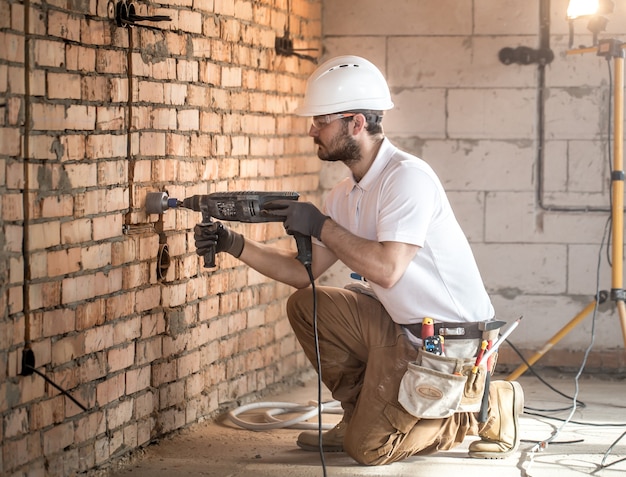Rising Damp: Signs, causes & treatment procedure
Rising damp occurs due to the capillary action of water through the wall. Here are major signs, causes & treatment procedures of rising damp.

Rising damp is a common form of structural damp that occurs due to the capillary action of water through the wall. It can damage the internal structure of the property.
There are several causes of rising damp. The treatment of rising damp only works if it's diagnosed correctly. In this article, we are going to discuss major signs, causes & treatment procedures of rising damp.
Signs of rising damp
According to the professional rising damp specialists, it is quite difficult to find out the rising damp from structural damp forms like penetrating damp or condensation. However, experts have found some common signs of this damp that you should know:
Apart from that, dark patches on internal walls is another major sign of rising damp. Moreover, wet masonry & brickwork are also caused by rising damp.
Causes of rising damp
In many residential buildings, a barrier or shield is installed at the bottom level of walls for preventing water from rising up. This barrier is known as DPC or Damp Proof Course. DPC is generally made of water-resistant and non-absorbant materials like plastic, bitumen, slate, etc. According to the rising damp experts, rising damp is mainly caused by improper or damaged DPC. The damp proof course may fail due to many reasons. Apart from that, if you do not have DPC, there is a major risk of rising damp. Apart from improper DPC, experts have found some other causes of rising damp. In some cases, the DPC remains intact but it is bridged. Some other causes of rising damp include:
How to treat the rising damp?
The rising damp is one of the rare forms of structural dampness & the treatment only works if it's diagnosed perfectly. So, to fix the rising damp problem, you should call the certified & experienced professionals who can fix this problem efficiently. Experts generally suggest installing or repairing the damp proof course or DPC. This is because DPC is the most economical & effective way to fix rising damp.
Rising damp can be treated by professionals. Experts always prefer to install DPC to fix this damp. The damp proof course will give you a long-lasting result.
There are several causes of rising damp. The treatment of rising damp only works if it's diagnosed correctly. In this article, we are going to discuss major signs, causes & treatment procedures of rising damp.
Signs of rising damp
According to the professional rising damp specialists, it is quite difficult to find out the rising damp from structural damp forms like penetrating damp or condensation. However, experts have found some common signs of this damp that you should know:
- Tide salts marks
- Staining of peeling wallpaper, wall coverings & blistering paint.
- Musty & foul smell.
- Wall discoloration
- Fragmenting plaster.
- Decaying timber such as floorboards, floor joists, skirting boards, etc.
Apart from that, dark patches on internal walls is another major sign of rising damp. Moreover, wet masonry & brickwork are also caused by rising damp.
Causes of rising damp
In many residential buildings, a barrier or shield is installed at the bottom level of walls for preventing water from rising up. This barrier is known as DPC or Damp Proof Course. DPC is generally made of water-resistant and non-absorbant materials like plastic, bitumen, slate, etc. According to the rising damp experts, rising damp is mainly caused by improper or damaged DPC. The damp proof course may fail due to many reasons. Apart from that, if you do not have DPC, there is a major risk of rising damp. Apart from improper DPC, experts have found some other causes of rising damp. In some cases, the DPC remains intact but it is bridged. Some other causes of rising damp include:
- Debris in the subfloor or wall cavity.
- External or internal renders
- Plasters overlapping the DPC
- The height difference between the external ground levels & the DPC.
- Inappropriate material insulation in the cavity.
- Solid floors
- Intersecting brickwork or masonry structures
- Improper structure of garden walls
How to treat the rising damp?
The rising damp is one of the rare forms of structural dampness & the treatment only works if it's diagnosed perfectly. So, to fix the rising damp problem, you should call the certified & experienced professionals who can fix this problem efficiently. Experts generally suggest installing or repairing the damp proof course or DPC. This is because DPC is the most economical & effective way to fix rising damp.
Rising damp can be treated by professionals. Experts always prefer to install DPC to fix this damp. The damp proof course will give you a long-lasting result.
Advertise on APSense
This advertising space is available.
Post Your Ad Here
Post Your Ad Here
Comments